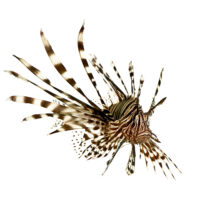 Species is a fundamental concept in modern biology, the building blocks of Earth’s vast and diverse biosphere. While the principal function of modern biology is naming, grouping, and defining species, the concept of species opens a window into the checkered history of evolution.
Species is a fundamental concept in modern biology, the building blocks of Earth’s vast and diverse biosphere. While the principal function of modern biology is naming, grouping, and defining species, the concept of species opens a window into the checkered history of evolution.
The term “species” emerged in the fifteenth century, taken from the Latin species meaning “a particular sort, kind, or type” originating from the Indo-European root *spek- a word meaning “to observe” – the language of Japheth, one of Noah’s three sons.
Naming Approaches
The naming of species, beginning in Genesis, is a continuing challenge. A name is like a calling card, conveying the carrier’s character. The commonly known Lionfish (pictured left) was first named by German naturalist Lorenz Oken (pictured right) in 1817 from the French name “Les Pterois,” meaning “fins,” referring to the high dorsal and long pectoral fins.
However, determining what characteristics distinguish one species from another has long challenged naturalists. As Charles Darwin explained in The Origin of Species, there is “no golden rule” –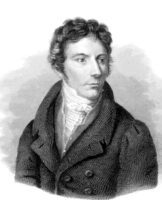
“It is all-important to remember that naturalists have no golden rule by which to distinguish species and varieties.”
During the Age of Discovery, beginning in the fifteenth century, naturalists collected, cataloged and managed an explosion of unknown species returning from global expeditions – launching the field of study known as Modern Biology. However, as science writer Mindy Weisberger in the CNN article “What defines a species?” (2023) notes –
“Biologists have wrestled with the concept [species] for about as long as the field of biology has existed.”
Early Western Civilization naming approaches focused on naming based on each life-form’s unique distinctiveness.
John Ray
 John Ray (1627-1705), the founder of Modern Biology, is credited for coining the term “species” for distinguishing between the different types of plants and animals. Elected as a Fellow of the Royal Society, Ray explained in 1686 –
John Ray (1627-1705), the founder of Modern Biology, is credited for coining the term “species” for distinguishing between the different types of plants and animals. Elected as a Fellow of the Royal Society, Ray explained in 1686 –
“No surer criterion for determining [plant] species has occurred to me than the distinguishing features that perpetuate themselves in propagation from seed… Animals likewise that differ specifically preserve their distinct species permanently; one species never springs from the seed of another nor vice versa.”
Publishing over 170 works, in his celebrated three-volume Historia Plantarum, published between 1886 and 1704, Ray named and grouped 18,000 plant species by similarities: trees, shrubs, subshrubs, and herbaceous plants. In honoring Ray, the Natural History Museum, London founded the Ray Society, a scientific text publication society, in 1844. In his 1670 Collection of English Proverbs, Ray is famous for including the following phrase –
In honoring Ray, the Natural History Museum, London founded the Ray Society, a scientific text publication society, in 1844. In his 1670 Collection of English Proverbs, Ray is famous for including the following phrase –
“The road of good intentions is paved with good intentions.”
A young Swede would reignite Ray’s pursuit, likely influenced by Greek philosophy, by viewing Earth’s biosphere as a “natural system.”
Carolus Linnaeus
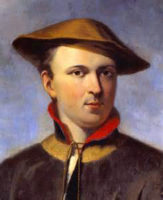 The Swedish naturalist, Carolus Linnaeus (1707-1778), continued the process of naming plants and animals. Linnaeus (pictured left), however, introduced his innovative two-name (binomial name) system to name and group by similarities in Species Plantarum. The grouping, Linnaeus perceived, reflects the order of creation –
The Swedish naturalist, Carolus Linnaeus (1707-1778), continued the process of naming plants and animals. Linnaeus (pictured left), however, introduced his innovative two-name (binomial name) system to name and group by similarities in Species Plantarum. The grouping, Linnaeus perceived, reflects the order of creation –
“The study of nature would reveal the Divine order of God’s creation, and it was the naturalist’s task to construct a ‘natural Classification’ that would reveal this order in the universe.”
Best known for Systema Naturae, during his lifetime Linnaeus published more than thirty works, five more published posthumously. His first edition of Systema Naturae, printed in the Netherlands in 1735, was a twelve-page work.
By the time Systema Naturae reached its 2,400-page tenth edition in 1758, Linnaeus had included 7,700 species of plants and 4,400 species of animals. Like Ray, Linnaeus contested the Greek concept of “spontaneous generation,” noting –
“All the species recognized by Botanists came forth from the Almighty Creator’s hand, and the number of these is now and always will be exactly the same … Accordingly to the former have been assigned by Nature fixed limits, beyond which they cannot go: while the latter display without end the infinite sport of Nature.”
Linnaeus’s binomial naming system continues as the universal approach to naming and grouping plants and animals. The binomial name is also known as the species binomen, scientific name, or Latin name.
Greek Philosophy Influence
Linnaeus entitled his work “Systema Naturae.” System means things work together as parts of a mechanism or an interconnecting network. Naturae originates from Latin nātūra, a philosophical term derived from the verb for birth, a translation for the (pre-Socratic) Greek term phusis, referring to grow, to appear.
Linnaeus’ choice of words in his work is a testament to the profound influence of Greek philosophy on the natural sciences. Aristotle (384–322 BCE), the esteemed tutor of Alexander the Great, is widely acknowledged as the pioneer who introduced the concepts of natural philosophy into Western academia.
Founded on reason and explanations, natural philosophy was the dominant study approach prior to the broader use of the Scientific Method in the nineteenth century.
Augustine de Candolle
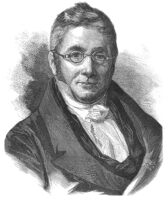 Swiss botanist Augustin de Candolle (1778-1841) was the first to continue Linnaeus’s naming work, publishing “Theories Elementary de la Botanique” (1813). Influenced by the Greek understanding of nature, de Candolle grouped species based on observable similarities.
Swiss botanist Augustin de Candolle (1778-1841) was the first to continue Linnaeus’s naming work, publishing “Theories Elementary de la Botanique” (1813). Influenced by the Greek understanding of nature, de Candolle grouped species based on observable similarities.
After arriving in Paris in 1798, de Candolle (pictured left) befriended Jean-Baptiste Lamarck, preparing revisions of his Flore française (1805-1815) using Aristotle’s similarities approach.
De Candolle is credited for introducing the term taxonomy (from Greek words: taxis, meaning arrangement, and nomos, meaning rules or law) to describe the process of grouping. Amazingly, like Darwin, neither Candolle nor Lamarck defined the term “species.” However, by 1831, Darwin was corresponding with de Candolle.
Charles Darwin
Senior by three decades, Darwin referred to de Candolle more than twenty times in The Origin of Species. Like de Candolle, Darwin argued that the Galapagos finches’ similarities is evidence of an evolutionary process, Arguing –
“Seeing this gradation and diversity of structure in one small, intimately related group of birds, one might really fancy that from an original paucity of birds in this archipelago; one species had been taken and modified for different ends.”
However, what method did Darwin use to distinguish between the species – since he never defined the term “species.”
Countering the limitations of strict scientific principles, vague concepts in the natural sciences were in vogue during the Age of Enlightenment, even encouraged. Ironically, in his publication entitled The Origin of Species (1872), Darwin could not define the term, noting –
“It is not pretended that we have any sure criterion by which species and varieties can be discriminated.”
Vagueness, however, is now known as as Darwin’s species problem. The Enlightenment movement clashed with the Scientific Revolution. Not surprisingly, the Royal Society never recognized Darwin’s works – following the Origin of Species in 1859.
Species Naming Convention
To address emerging natural sciences issues, the first annual International Botanical Congress (IBC) met in Brussels to standardize botanical nomenclature in 1864. Their “best guide to follow for botanical nomenclature” was published in Paris – three years later.
However, a universal consensus on the definition of species continued into the twentieth century; WIKIPEDIA explains the source of Darwin’s problem –
“Although intended as an objective method, in practice the choice and implicit or explicit weighting of characteristics [similarities] is influenced by available data and research interests of the investigator.”
Inherent subjectivity complicates distinguishing species using similarities objectively. In the search for an objective method to define species, evolution scientists by the mid-twentieth century developed a new definition of species based on Ray’s reproductive concept in the History of Plants (1686) –
“… no surer criterion for determining species has occurred to me than the distinguishing features that perpetuate themselves in propagation from seed. Thus, no matter what variations occur in the individuals or the species, if they spring from the seed of one and the same plant, they are accidental variations and not such as to distinguish a species… Animals likewise that differ specifically preserve their distinct species permanently; one species never springs from the seed of another nor vice versa.”
However, the pendulum of modern naturalists swung against Ray’s understanding of nature.
Modern Species Concept
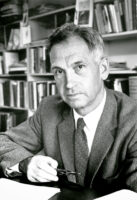 English evolutionary biologist Ernst Mayr (1904-2005) proposed reproductive isolation (RI) as an option for Darwin’s “golden rule,” noting –
English evolutionary biologist Ernst Mayr (1904-2005) proposed reproductive isolation (RI) as an option for Darwin’s “golden rule,” noting –
“Species are groups of actually or potentially interbreeding natural populations, which are reproductively isolated from other such groups.”
Mayr (pictured left) was pivotal in establishing the general concept of species and was one of the most popular authors in this competitive field. In Systematics and the Origin of Species (1942), Mayr presented his biological species concept (BSC) definition of species, a pseudo resolve of Darwin’s species problem.
Following the definition’s seeming acceptance, Mayr emerged as a leader in the “species problem” debate. As Anja Westram explains in “What is Reproductive Isolation?” published in the Journal of Evolutionary Biology (2022) –
“Reproductive isolation (RI) is a core concept in evolutionary biology and the basis by which biological species [BSC] are defined.”
Modern Consensus
Mayr’s species concept resonated with evolution scientists, especially Theodosius Dobzhansky’s concepts in Genetics and the Origin of Species (1937). Dobzhansky (pictured right) had re-introduced Ray’s RI concept of species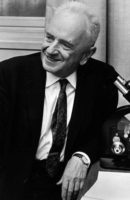 earlier. Julian Huxley, the grandson of Darwin’s Bulldog, synthesized the concepts developed by Mayr and Dobzhansky, along with those proposed by George Gaylord Simpson and George Ledyard Stebbins in his book – Evolution: The Modern Synthesis (1942).
earlier. Julian Huxley, the grandson of Darwin’s Bulldog, synthesized the concepts developed by Mayr and Dobzhansky, along with those proposed by George Gaylord Simpson and George Ledyard Stebbins in his book – Evolution: The Modern Synthesis (1942).
Huxley’s synthesis of natural selection, Mendelian genetics, and population genetics emerged as a dominant biological paradigm, unleashing a revolution in research and biotechnology, prompting Dobzhansky to declare –
“Nothing in biology makes sense except in the light of evolution.”
Testing the Concept
 Huxley’s (pictured left) theory emerged as the most widely recognized theory of evolution. The expanding reach of twentieth-century biotechnology, however, soon tested Mayr’s RI concept. Westram explains –
Huxley’s (pictured left) theory emerged as the most widely recognized theory of evolution. The expanding reach of twentieth-century biotechnology, however, soon tested Mayr’s RI concept. Westram explains –
“A key conclusion is that RI depends strongly on circumstances—including the spatial, temporal and genomic context—making it difficult to compare across systems. After reviewing methods for estimating RI from data, we conclude that it is difficult to measure in practice.”
Biologists soon reignited the search for a universal and testable species concept. One of the first papers emerged in 1970 by Robert Sokal and Theodore Crovello, arguing for a return to a similarities [phenetic] species concept – unleashing a new round of defining species papers. A flood of definitions followed.
By 1997, Biologist Richard Mayden of St. Louis University identified twenty-four proposed species definitions. Philosopher of biology John Walkins of the University of Sydney published “A List of 26 Species ‘Concepts’” in 2006. According to the Smithsonian Magazine (2013) –
“More than 70 official species definitions exist, of which 48 are widely accepted and used by scientists.”
Matthias Wolf (pictured right), Chair of Bioinformatics at the University of Würzburg, outlines the issues surrounding the definition of species in the article “How to Teach about What Is a Species?” (2021) published in the journal Biology, concluded –
Biology, concluded –
“The discussion about what a species is will certainly continue.”
Of the new lines of technical evidence available to distinguish between species, the entry of the genomic revolution was anticipated to uncover the elusive “golden rule” for defining species. However, as Nancy Simmons, curator-in-charge of mammalogy at the American Museum of Natural History, explained to Weisberger –
“We get into questions of how much of a percentage of a difference in the genetic code do you have to have to be a distinct species — and people disagree on that, too… So, even when we have genetic data, you don’t find complete agreement about how to interpret it.”
Since there is no “complete agreement” on what constitutes species-defining characteristics, distinguishing a species based on similarities is tricky. The challenge to define what is meant by species, As zoologist Kevin de Queiroz of the Smithsonian Institution explains in the article “Ernst Mayr and the Modern Concept of Species” –
“Despite the important influence that Mayr’s writings concerning species had on systematics in particular, and on evolutionary biology in general, and despite the wide adoption of his proposed species definition in textbooks, these contributions did not solve the long-standing problem concerning the nature of species.”
As building blocks of Earth’s biosphere, understanding the nature of species, biologists have an existential problem finding Darwin’s species’ missing “golden rule” – a problem as old as biology itself. As even Dobzhansky reportedly noted in 1937 –
“Of late, the futility of attempts to find a universally valid criterion for distinguishing species has come to be fairly generally, if reluctantly, recognized.”
 In the Quantamagazine article “A Mutation Turned Ants Into Parasites in One Generation” (2023), science writer Viviane Allier (pictured left), mirrored Dobzhansky’s observations –
In the Quantamagazine article “A Mutation Turned Ants Into Parasites in One Generation” (2023), science writer Viviane Allier (pictured left), mirrored Dobzhansky’s observations –
“How exactly a speciation event could happen after the parasitic phenotype arises is a mystery… however, that all these questions and speculations are complicated by the slipperiness of defining what a species is.”
Not surprisingly, no consensus on defining a species has been developed by any professional science organization. After centuries of accumulated thought and wisdom, clarity about distinguishing between species is still a work in progress.
Counting Species
The estimated number of species in Earth’s biosphere waiting to be named far exceeds the number currently named. The International Union for Conservation of Nature (IUCN) listed only the names of 2.16 million living species in 2022. However, as Robert May, a mathematical biology legend, estimates in a paper published in Science (2010) –
living species in 2022. However, as Robert May, a mathematical biology legend, estimates in a paper published in Science (2010) –
“Our best-guess [is]… in the range of 5 to 10 million eukaryotes (never mind the viruses and bacteria), but we could defend numbers exceeding 100 million, or as low as 3 million.”
 The magnitude of the task is daunting. As Kevin Thiele, in the article “Why Scientists Name Species,” notes –
The magnitude of the task is daunting. As Kevin Thiele, in the article “Why Scientists Name Species,” notes –
“At our current rate of progress, it will take more than 400 years even to approach a complete biodiversity inventory of Australia.”
To continue the naming of species process, new nomenclature organizations have formed. While naming is an essential function of biology that started with Adam, as The Harvard Gazette notes –
“A rose by any other name — could be confusing.”
A biological name reflects the defined character of the species. However, defining a species continues as one of the most debated issues in science. Since a scientifically valid definition of species cannot exist without a testable definition, inferring evolutionary relationships cannot be validated scientifically.
The concept of biological evolution originated in Greek philosophy – and continues as a philosophy, not a scientifically valid theory. The naming of species is an insightful window into the checkered, philosophically driven history of evolution.
Genesis
The concept of species is compatible with the Genesis account written by Moses – each “kind” is distinctly unique and stable, as envisioned by the founder of modern biology. Elected as a Fellow of the Royal Society in 1667, John Ray during the Science Revolution (pictured right) continued the commission initially given to Adam.
Ray viewed Genesis as an account to understand the Creator of species, writing –
“If the number of the creatures be so exceedingly great, how great, nay, immense, must needs be the power and wisdom of him who formed them all! For… as it argues and manifests more skill by far in an artificer, to be able to frame both clocks and watches, and pumps and mills, and grandiose and rockets, than he could display in making but one of those sorts of engines; so the Almighty discovers more of his wisdom in forming such a vast multitude of different sorts of creatures, and all with admirable and irrevocable art, than if he had created a few; for this declares the greatness and unbounded capacity of his understanding.”
Ray’s unedited statement is posted in the Appendix.
Refer to the Glossary for the definition of terms and to Understanding Evolution to gain insights into understanding evolution.
Appendix
The complete unedited quote in the Genesis section by John Ray –
“If the number of the creatures be so exceedingly great, how great, nay, immense, must needs be the power and wisdom of him who formed them all! For (that I may borrow the words of a noble and excellent author) as it argues and manifests more skill by far in an artificer, to be able to frame both clocks and watches, and pumps and mills, and grandiose and rockets, than he could display in making but one of those sorts of engines; so the Almighty discovers more of his wisdom in forming such a vast multitude of different sorts of creatures, and all with admirable and irrevocable art, than if he had created a few; for this declares the greatness and unbounded capacity of his understanding. Again, the same superiority of knowledge and would be displayed by contriving engines of the same kind, or for the same purpose, after different fashions, as moving of clocks by springs instead of weights: so the infinitely wise Creator hath shown in many instances that he is not confined to one only instrument for the working of one effect, but can perform the same thing by divers means. So, though features seem necessary for flying, yet hath he enabled several creatures to fly without them, as two sorts of fishes, one sort of lizard, and the bat, not to mention the numerous tribes of flying insects. In like manner, though the air-bladder in fishes seems necessary for swimming, yet some are so formed as to swim without it, vis., First, the cartilaginous kind, which by artifice they poise themselves, ascend and descend at pleasure, and continue in what depth of water they list, is as yet unknown to us. Secondly, the cetaceous kind, or sea-beasts differing in nothing almost but want of feet. The air which in respiration these receive into their lungs, may serve to render their bodies equiponderant to the water; and the construction and dilation of it, by the help of the diaphragm and muscles of respiration, may probably assist them to ascend or descend in the water, by an impulse thereof with their fins.”



